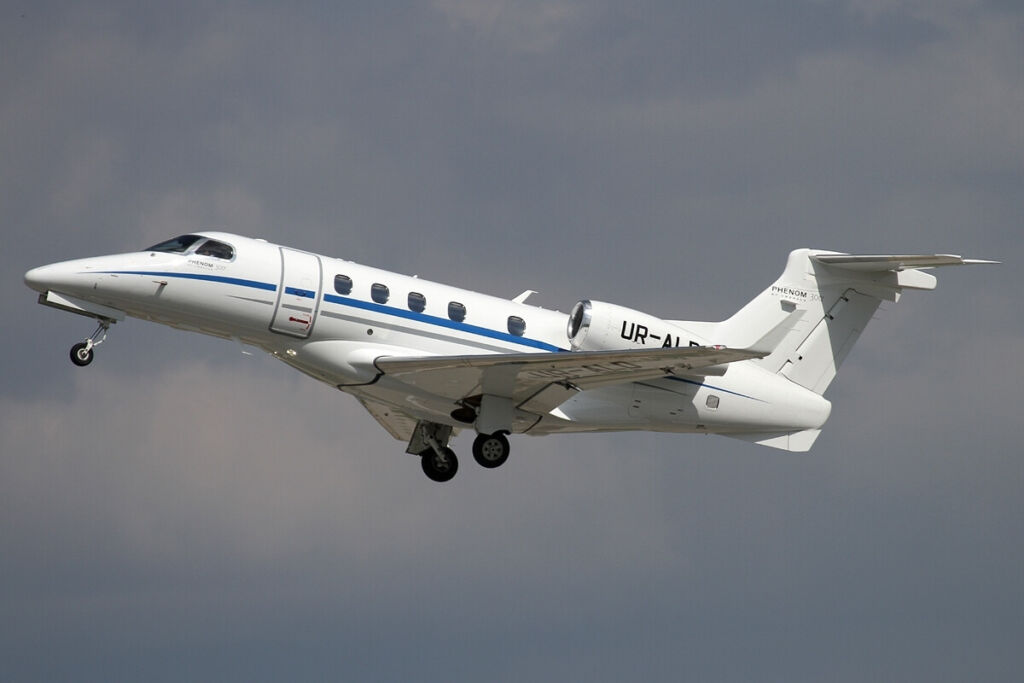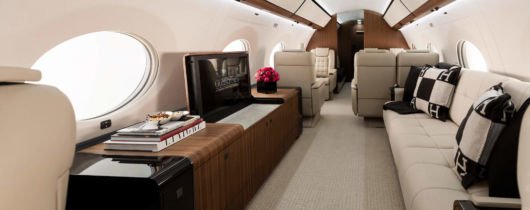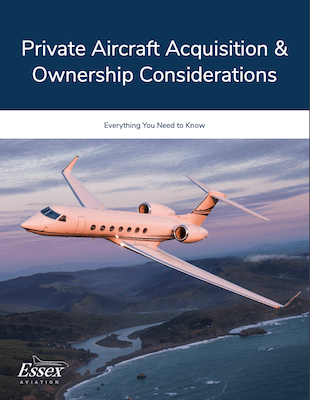
Whether you’re exploring the wide world of private aviation for the very first time or are a seasoned traveler, it’s important to consider not only the utilization models available to you, but also the various aircraft classes you can from choose. This guide is intended to provide you with a better understanding of light private jets, including what benefits they have to offer, how they compare to other classes of private aircraft and more.
What Is a Light Private Jet?
A light private jet — also known as a light jet or small cabin jet — is the next class of jet aircraft up from very light jets, or VLJs. Although specifications and performance vary depending on each aircraft’s particular make and model, light private jets are generally capable of accommodating four to eight passengers, offer a maximum non-stop range of nearly 1,700 nm and have average cruising speeds of 420 knots.
Most examples of popular light jets exceed the Federal Aviation Administration’s definition of Light Aircraft, as their maximum gross takeoff weight exceeds 12,500 lbs. While light private jets have certain advantages over midsize and large cabin jets, they do not offer a stand-up cabin or other amenities commonly associated with larger aircraft classes, such as a full-service galley or dedicated lavatory.
What Benefits Do Light Private Jets Offer?
Light jets are a popular option for both business and personal use due to their relatively low operating costs, high speeds and ability to fly above most adverse weather. Many light private jets also have excellent short-field performance, which grants aircraft owners access to a large number of small, less busy airports, often closer to their final destination.
Additionally, given their smaller size, light private jets tend to require a lower upfront investment and require lower variable and fixed costs than larger classes of aircraft. Last but not least, a variety of light jets allow for single qualified pilot operation, which may be a key objective for owner-pilots.
As with all other classes of aircraft, travelers interested in flying on light private jets have a variety of private aviation options available to them, including chartering, leasing and outright acquisition. When considering a light private jet, be aware of the aircraft’s specifications and available range, especially if all seats are to be occupied or if your destination airport has a unique short or high-altitude runway. Certain factors, such as the total number of passengers, the amount of luggage, weather conditions and runway length can impact a light private jet’s range capabilities. This can lead to the need to limit the weight of the jet, which reduces the maximum quantity of fuel it can carry.
Aircraft Class Comparisons
Here is a broad look at all private aircraft classes of private aircraft with some basic specifications:
| Class | Passanger Capacity | Average Range | Average Cruising Speed | Acquisition Cost Estimate (New) |
| Very Light Jet | 4-5 | 1,000 nm | 324-421 KTAs | $3.5M-$5.5M |
| Light Jet | 4-8 | 1,800 nm | 400 KTAs | $6.5M-$9.5M |
| Midsize Jet | 8-10 | 2,000-3,000 nm | 408-460 KTAs | $9.9M-$21M |
| Super Midsize Jet | 8-12 | 3,000-3,600 nm | 528 KTAs | $21M-$39M |
| Large Cabin/Long Range Jets | 12-16 | 6,000 nm | 525 KTAs | $45M-58M |
| Ultra-Long Range/Heavy Jet | 12-18 | 7,400 nm | 530 kts KTAs | $60M-$75M |
Source: Conklin de Decker
Popular Light Private Jet Models
Presented in no particular order, here are some of the most popular light private jets on the market today:
| Model | Manufacturer | Passengers | Max Range | Approximate Cost (New) |
| Citation CJ4 Gen 2 | Textron | 8 | 1,667 nm | $11.2M |
| Phenom 300E | Embraer | 6 | 1,811 nm | $10.3M |
| PC-24 | Pilatus | 6 | 1,525 nm | $11M |
| Citation CJ3 GEN2 | Textron | 6 | 1,414 nm | $9.9M |
Source: Conklin de Decker
How Do I Know If a Light Private Jet Is Right for Me?
While light private jets do have certain characteristics that should factor into any buyer’s decision, they can be an excellent, cost-effective solution for many travelers. When evaluating private aircraft models — including light private jets — consider the following:
- What are your primary destinations, and what private airports serve those locations?
- Are your flights relatively short in duration (two to three hours), or are they longer?
- What is your top priority when traveling to distant destinations? For example, would you be open to a fuel stop, or is it more important that you save time by making longer range trips without stopping?
- How many passengers will you typically fly with?
- Are the guests you intend to fly with comfortable with the smaller cabin size and fewer amenities typical of a light private jet? As a general note, we recommend that prospective buyers consider whether a reduced galley space and lavatory are acceptable, especially if their planned flight durations are typically over three hours.
- How much baggage space will you and your guests typically require? Although light private jets offer generous luggage space, it may be inadequate for passengers who typically travel with oversized cargo.
- What type of cabin amenities do you require? For example, do you need in-flight connectivity and dedicated workspaces? Although light private jets do offer such amenities, actual tabletop space will be limited as compared to what you would find with a larger class of aircraft.
The consultants at Essex Aviation Group can conduct a non-biased full needs assessment for any new and returning clients to help them identify the private aviation solution and aircraft class that can accommodate their travel requirements and operating budget. Schedule a consultation today and take the first step toward determining whether a light private jet is right for you — and, if so, which model would best meet your needs.







